Businesses are using different queuing techniques and methods in order to delight their customers and visitors. Earlier it was just manual queuing where people were standing in physical lines and waiting for their turn. The virtual queuing methods have become obsolete over the time, and the more modern and technology based digital queue management system took over. However, not all queue management systems are the same, some offer more innovative features and some don’t. Basically a modern digital queue management system is combination of software and hardware tools which help businesses streamline the customer flow and manage the queues with more efficiency. A good queue management system not only help regulating the queues, but it also helps improving the customer experience and the staff efficiency. The digital queuing is not a new concepts in fact businesses are using digital tools and technology to aid their queuing methods since around past two decades. As the other technology evolves such as computers, internet, smartphones, etc. the queue management systems have also evolved.
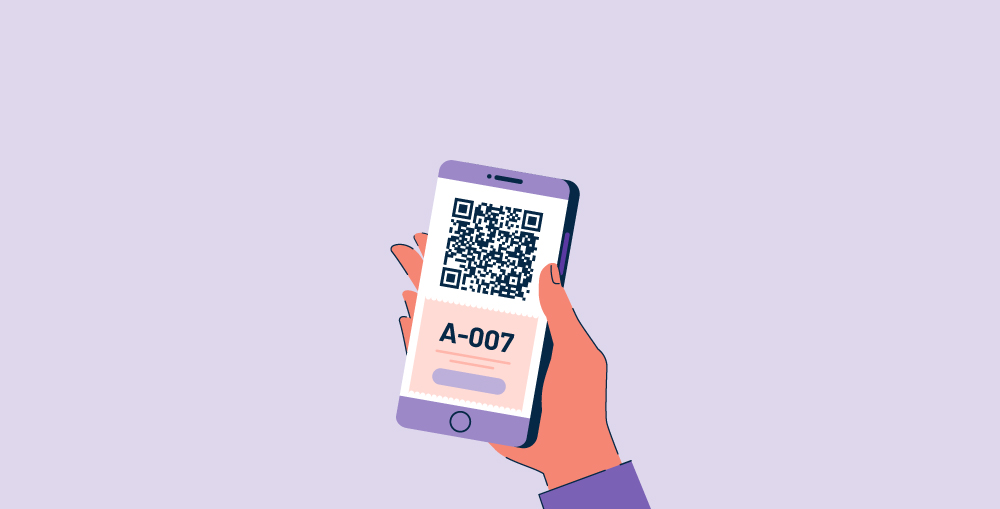
Now a days a modern queue management system includes a variety to technologically advanced features which evolved over a long period of time and got more efficient. With the rise of queuing technology high-end manufacturers also started investing in research and development (R&D) which speedup the modernization of the industry. The virtual queuing is also a very modern and advanced feature of a digital queue management system. It is being present since 6 to 8 years, but rapid adaptation occurs during the 2020 and onwards. When the social distancing become a new norm and the businesses were required to impose strict health and safety policies the virtual queuing have proven to be one of the most effective tool ever. That is what really paved the way for the virtual queuing. Now a days businesses are rapidly adopting and implementing virtual queuing technologies to enhance the customer experience and to improve their operational capabilities, productivity and performance of the employees. In this blog we will discuss what is virtual queuing and why it become essential for a modern business.

What is Virtual Queuing?
By definition a virtual queuing is a queuing process which allow customers and visitors to signup remotely using multiple remote channels such as mobile phones, SMS, emails, appointment booking portals, website/online, call, etc. The virtual queuing doesn’t require customers and visitors to wait inside the premises and provide customers with the freedom to wait remotely, outside of the business premises and arrive only when their turn comes. This can significantly reduce the wait time, in fact the wait time at the branch/premises can be literally reduced to none. That is one of the greatest advantage of the virtual queue management systems. The virtual queue management system allow customers to sign-up remotely thorough any preferred channel, it a lot them a virtual ticket or e-ticket, which is their identifier. Along with that the queue management system can also communicate with the customers via SMS, smartphone app, or online portal. The staff and service agents can also communicate with the customers. The virtual queue management system keep providing them the live queuing information and allow them to arrive only when their turn comes, hence they don’t have to wait within the premises or confined waiting areas.
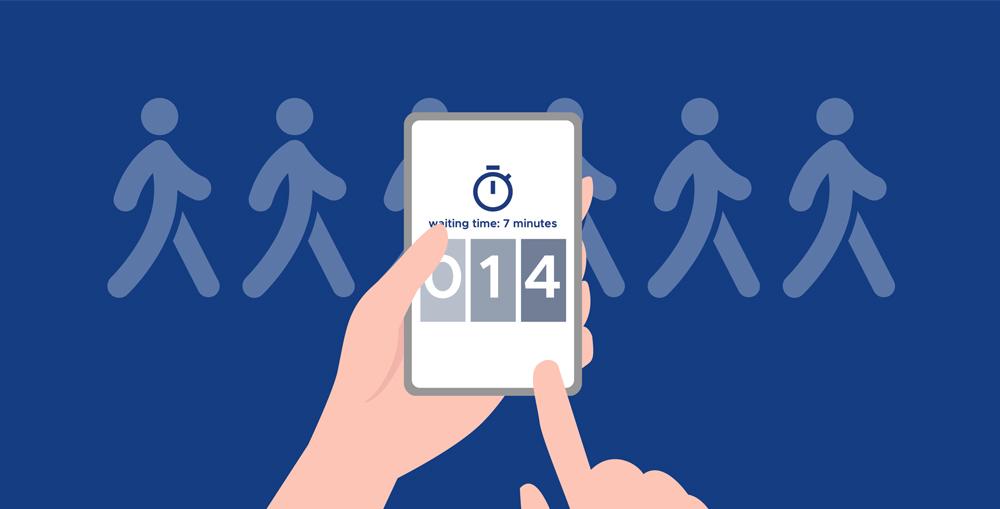
Why Virtual Queuing has become an Essential?
Before we start discussing the benefits of the virtual queuing it is important to understand how market and customer preferences are changing. The Dubai and in fact the entire UAE is a highly advanced market, the economy is growing steadily, the overall market conditions are very business-friendly, this means the competition is also very high. High competition results in more competitive markets which resultantly raise the customer standards. Here in UAE an average consumer is very well-versed with the technology and several industries have witnessed a common change in customer behavior which is the preference of digital experience over regular experience. Here in UAE the internet penetration is 99% and almost the same percentage of population uses smartphones and spend hours on social media on daily bases. This lead to a universal change across all industries. All businesses started leveraging these modern technologies which led to more dominance of digital interaction and digital experience. In fact now a days a common consumer expect some kind of digital experience from their favorite brand. The virtual queuing is the same thing for the service based industry.

It is not only to satisfy the needs or expectations of the customer but it also have a lot of other perks. Here are some key advantages of the virtual queue management system which are helping both businesses and the consumers as well.
Simple Multi-channel Signup Facility
One of the biggest advantage of the virtual queue management system is that it offer more freedom, flexibility and facility to the customers. The customers can sign-up for the queue remotely. They don’t have to approach the ticket dispensing kiosk or unit to sign-up for the queue. In fact they can sign-up for the queue while sitting at the office or at home or on the go. The virtual queue management system integrates several digital and remote channels which allow customers to sign-up remotely. The customers can sign-up using the integrated queue management system smartphone app, they can utilize the appointment booking portal, they can use company website or dedicated customer portals, etc. The virtual queue management system also offer sign-up with SMS, email, phone call and even WhatsApp. These all are very convenient and easy-to-use channels. Everyone who signed-up will get an electronic ticket number, which will be their position in the queue. The queue management system can also collect basic information via these remote channels which is required to sign-up customers for the right queue. These methods make the sign-up process very simple and more convenient.

Enhance Waiting Experience and Reduce Wait Time
Another great advantage of the virtual queue management system is that it can significantly enhance customer’s waiting experience. The customers can sign-up remotely, the queue management system provides them with their e-ticket and their expected wait time. This enables the customers and visitors to plan their visit accordingly. They can plan their journey in a way that they arrive only when their turn comes. This also means that there would be no wait time at all. The customers and visitors are not bound to be present at the premises, which means they don’t have to wait either. Customers and visitors can wait at their home/office, nearby market, mall, at any other place and they can also plan their visit to arrive at the very time of their turn. The virtual queue management system smartphone app allow businesses to send queuing updates, alerts, and notification to user’s smartphone. Furthermore the virtual queue management system can also utilize the online portals, SMS and WhatsApp. These all facilities significantly enhance customer experience and reduce the customer wait time. Wait time is one of the major cause of customer unhappiness and if it can be reduced the customer happiness increases.

Automate Several Steps of Customer Journey
The digital innovation drives automation and automation means less human involvement in any process, which not only improve the process but also reduce the expenses of the business. A virtual queue management system can automate several customer journey processes, such as customer sign-up process, which is automated and also offer self-service channels to the customers. The customer flow management is fully automated. The virtual queue management system has AI (artificial intelligence) based algorithms and smart software engine which can capture analytical and system usage data in real-time, the data is recorded in the storage as well as fed to the AI algorithms which take real-time decision to streamline the customer flow. In any customer service center there are several services and several counters, some counters are dedicated for exclusive services some might serve premium customers or different customer groups, some services have more delivery time than others, some employees have more experience and better performance than the others and a lot more variables are there. All these variables can led to a more complex queuing situation and make management difficult for the staff.

However, a virtual queue management system can automatically process all these variable and take decisions based on the queuing policy. For example, if an employee left the counter, or the service delivery is taking more time than usual, the virtual queue management system’s smart algorithms can immediately sense it and they can divert the customers to other fast-paced counters without effecting their wait time and so on and so forth. The entire customer flow process is very dynamic, unlike manual queues when a customer is standing in a line, if that counter gets slower than the customers will have to wait longer. And if the counter stopped due to some reason, then it would become a huge problem to insert the customers in other queues. However, with the virtual queue management system none of such problems occurs, as all customers and visitors are signed-up for virtual queues and they are not physically standing in waiting lines which makes it easier for the queue management system to move them between different waiting lines to make sure the customer wit time won’t increase.

Furthermore the virtual queue management system continuously share information about the queues and keep the customers and visitors updated all the time via their preferred communication channel. Usually the queue management system mobile apps, SMS, WhatsApp and online portals are used to communicate with the customers. These days the WhatsApp is also gaining popularity as it provides instant two-way communication. These features keep customers and visitors informed all the time, if there is any change in wait time or anything else they customers can immediately get notified. Better and easy communication keep customers more engaged and also help improving their experience. The communication is usually done automatically by the virtual queue management system hence the business don’t have to appoint a staff for that, only occasionally the staff or service agents engaged in communication. All these automation help optimizing the customer journey, reduce the staff efforts and improve customer experience.
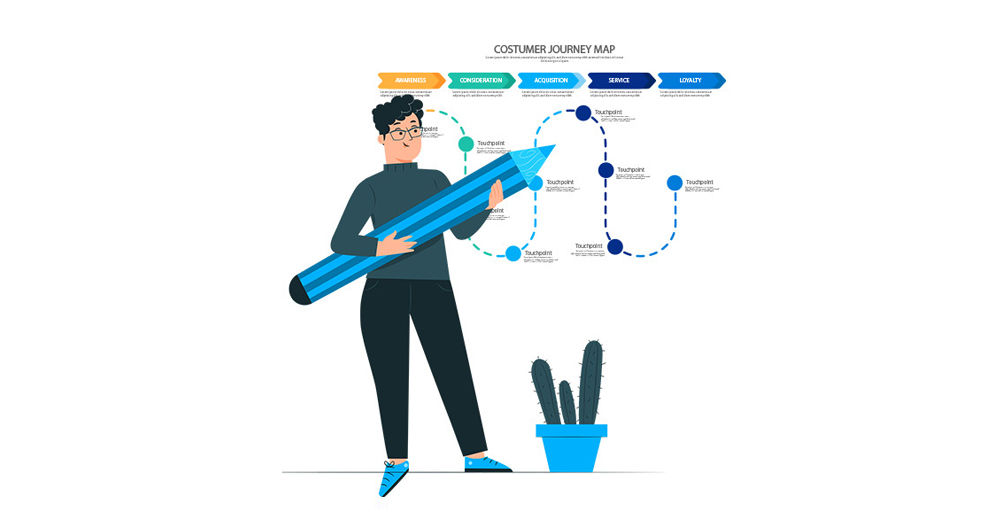
Intuitive Virtual Queue Management System Mobile Apps
Here in Dubai and all around the UAE the smartphones are very common, according to stats almost 99% of the population uses smartphones and also have access to internet. This have completely transformed the customer behavior and communication across all industries in the country. People felt more comfortable interacting through smartphone app rather than contacting the call center or visiting the website. The mobile apps have become a very important part of the business, especially for the service based industries. The virtual queue management system also offers mobile apps, which offer great features to enhance customer experience. For example, the virtual queue management system mobile apps are built for both Android and Apple iOS. They offer instant connection with the help center, they offer a variety of other services. The mobile apps also provide visit scheduling and booking features. The customers can easily view the details of the branches they are planning to visit in mobile apps. The mobile apps can provide information about the busy hours of the day, busy days of the week and so on.

While planning their visit the customers and visitors can easily chose an appropriate time which shows them less expected wait time. They can also book an appointment to avoid any delay in service. The virtual queue management system mobile apps also offer a branch locator feature which help customers and visitors to locate branches near to their location and it can also provide them the live queuing situation at those branches along with all other details. The virtual queue management system mobile app’s branch locator features is integrated with GPS navigation apps such as Google Maps, it can provide customers the live route information and help them understand which would be the most convenient branch to visit with least wait time. All these information can significantly enhance customer experience ad increase their satisfaction. The customers can also view the history of their past visits and the business can also request customers to provide feedback and the feedback can be automated as well. All these features help engage customers, improve their experience and increase their satisfaction.
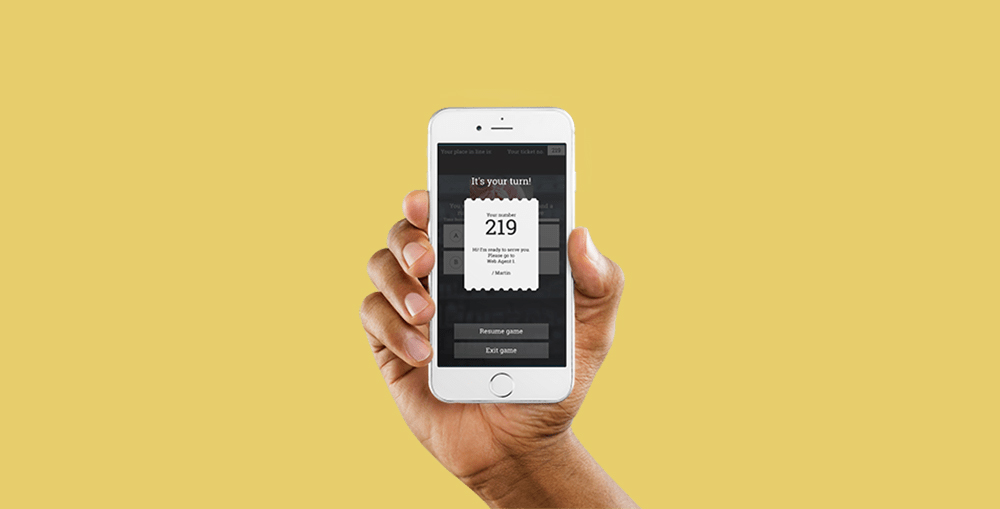
Improve Employee Efficiency and Productivity
The manual or traditional queuing turns out to be very counter-productive in the modern fast-paced business environment. Here in Dubai and all around the UAE the customers and the businesses both are well aware of the customer experience. Studies have shown that the customers are willing to pay extra if they are assured they will get a better experience. The business knows that too. That is the reasons businesses are always eager to adopt to modern solutions and technologies to enhance customer experience and to boost their internal processes. The virtual queue management system just do that. It simplify the queuing process for both the employees and the customers. Since the sign-up to customer calling everything is managed by the AI (artificial intelligence) algorithms of the queue management system, there is no conflict, unwanted delay or mismanagement in these steps. Which not only reduce the customer wait time but it also eliminate common problems from the queuing process. As everyone know the queues are managed by a computerized system so the customers never complaint about line jumpers, favoritism or mismanagement by the staff.

Furthermore since the customer journey is majorly managed by the virtual queue management system the employees have no role to play, they don’t have to deal with the customers and visitors much often, and they can focus on their primary tasks. This can significantly increase their work efficiency. The virtual queue management system also manage the workload of the employees and distribute the customers automatically among available counters, when the employee work under balanced workload they tend to perform well. The queue management system can also track various KPIs of the employees and help management understand their performance. The virtual queue management system can accurately track how many customers are served by the employee in a single shift, what was the service time for each customer and what was the average service delivery time, etc. The system also track how much time an employee remain active on the counter, and several other details. These KPIs and performance data help the management develop better training programs and improve their resource management capabilities. Which gradually improve the employee efficiency and also increase employee satisfaction.

System Integration Improve Productivity
The virtual queue management system is built using very widely available technology platforms which enables them to offer better and flexible integration features. The virtual queue management systems can easily be integrated with other systems, software, databases and central information center. Which allow businesses to offer more innovative features for the customers to maximize their experience. The integration and data sharing is also very helpful in optimizing internal processes, improving workflows and reducing the repetitive tasks. Furthermore the integration also help improving the service agent productivity. For example the service agents will have to prepare for the service beforehand, which takes time, then there are some post-service activities too. A virtual queue management system can ask customers about the service they need, it can also ask them to put identification data such as by scanning EID card, etc. and then it can use that data to support service agents with their tasks and reduce their efforts. It can boost the outcome of the customer feedback collection campaign. Similarly the virtual queue management system can help improving several internal processes which help increasing the overall productivity of the business.
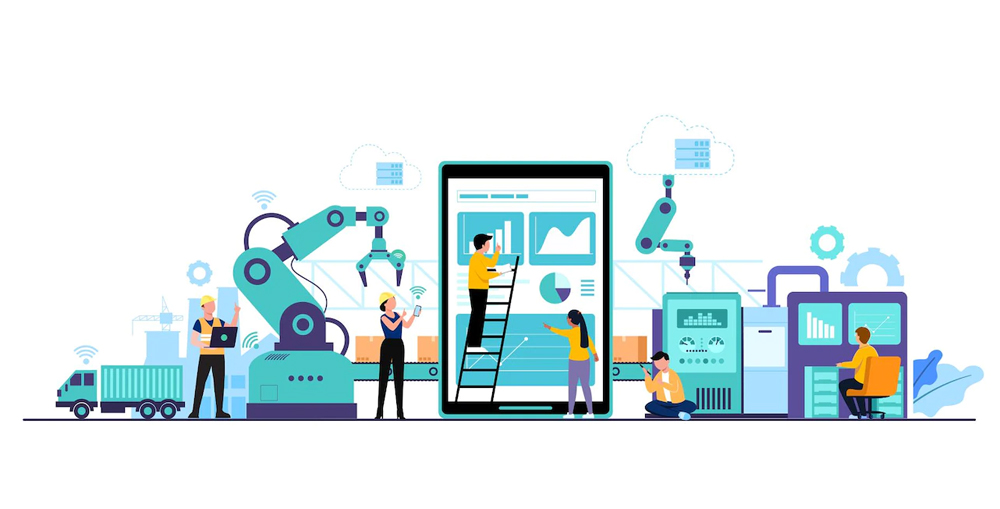
Cost Effective
The virtual queue management systems are very cost-effective solutions. The initial development and deployment cost is also relatively low. The virtual queue management system comes with a core serve software which can be hosted online, in local in-premises data centers and cloud, which requires very less maintenance. Furthermore the hardware that is used is also based on widely available technologies which requires very less maintenance and the maintenance itself is also very inexpensive. The virtual queue management system also help improving the internal processes by leveraging automation. The automation improve productivity and reduce human efforts, hence the businesses don’t have to deploy more employees to manage the customer flow and the overall branch operation. Hiring and retaining more employee is expensive and can significantly increase the operational cost of the branch. With the help of the virtual queue management system businesses can reduce the employees needed for a branch while increasing the productivity several times. Which help maximizing the profit of the business as well and help them achieve their strategic goals more effectively.

Business Intelligence Data
Business intelligence data is a valuable asset for any modern business. The modern businesses are heavily relying on the data and information to build their strategies and plans. The virtual queue management system collects highly accurate in-depth business intelligence data which help management understand the effectiveness of their queuing process and policy. The business intelligence data include analytical and system usage data, employee performance data, and it also includes customer feedback data. With the central control features the head office can monitor and manage all connected branches. The virtual queue management system’s core software is hosted on a server, which enables it to instantly update all user dashboards hence the head office can get the live queuing information from all connected branches. Furthermore the feedback collection improve the data quality and accuracy. Businesses can easily identify the bottle necks, flaws in customer flow policy, and with the help of the historic data the virtual queue management system can also predict the expected footfall which help businesses to have better resource planning and management and improve the efficiency and productivity.

Conclusion
The customers are always the first priority for any business. Customer happiness assures success and long term steady growth. Businesses in Dubai and all around the UAE are more adoptive towards the technological solutions to enhance their operational capabilities, performance and customer experience. In present day customers appreciate integration of modern technologies, in fact most of the time the customers expect form their favorite brands to offer excellent services and solutions with the help of modern technology and digital platforms. Here in UAE the digital experience is becoming more important day by day. For the queuing needs, businesses have started implementing modern technology to boost their productivity and to enhance the customer experience. The virtual queue management system is one of the most modern and highly advanced queuing solution. It offer a great deal of features, freedom and control to the customers which help increasing their happiness and satisfaction. The virtual queue management system also enhance business’s operational capabilities, it improves employee performance and reduce the operational expense which translates to more profitability and growth.
The entire UAE is a very competitive marketplace, customers have too many options available, which makes them more demanding and raise their expectations. Businesses have to make sure their customers gets a satisfactory interaction with their customer service centers. That is what makes a virtual queue management system absolutely essential for the queuing needs of a modern business. RSI Concepts is a leading virtual queue management system solution provider in Dubai, UAE. If you want to learn more about the subject or if you need our help to deploy a customized and cost-effective virtual queue management system for your business, please feel free to contact us through our Contact Us page or leave a comment in the comment box below and we will get in touch with you soon.
Check out this: Benefits of Using Modern Queue Management Software